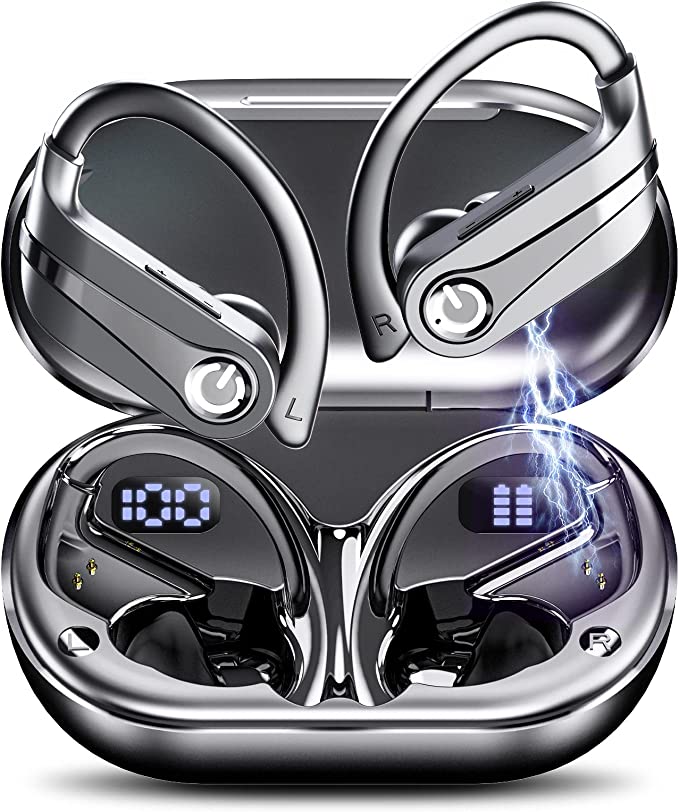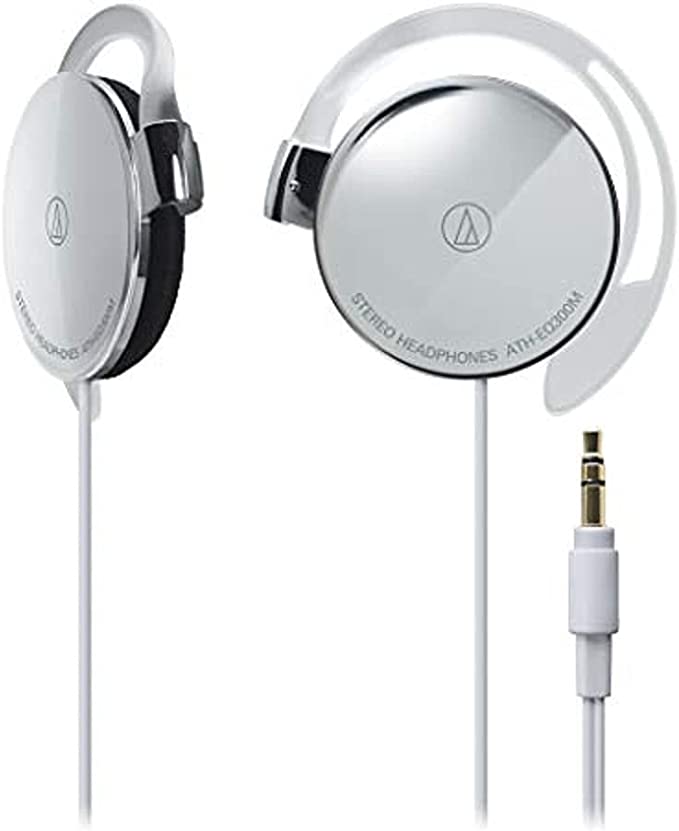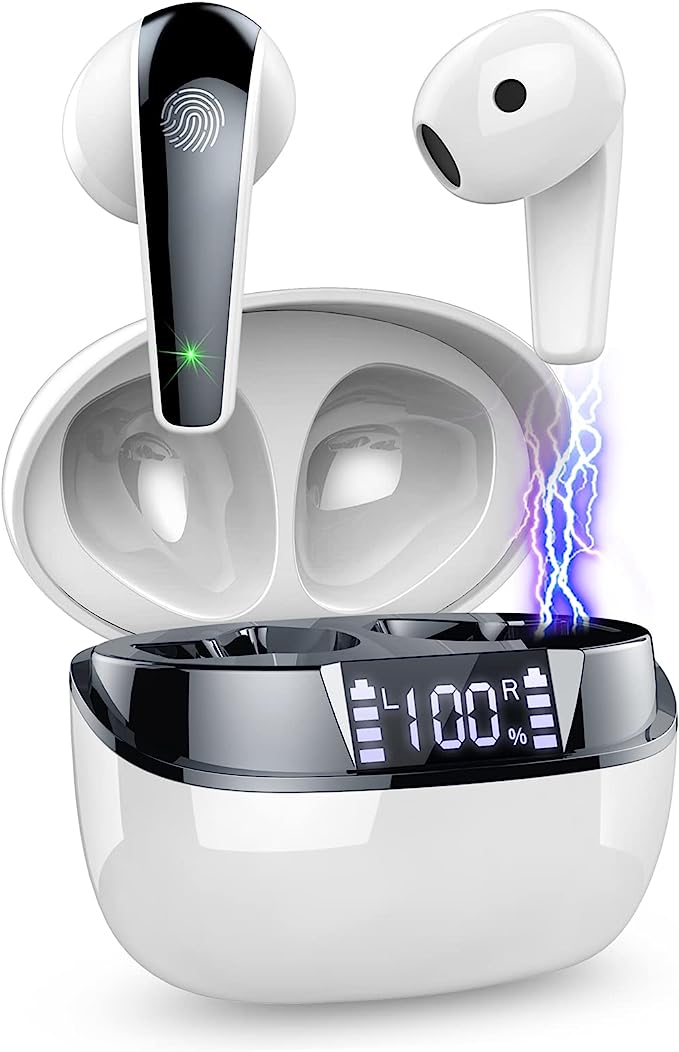There’s a rhythm to an active life, a pulse that beats in time with our efforts, whether pounding the pavement, lifting weights, or scaling a challenging trail. For many, music isn’t just background noise; it’s the fuel, the motivator, the invisible coach. Yet, how often is that vital flow interrupted by a dislodged earbud, a crackling connection, or the dreaded silence of a dead battery? It’s a common frustration, one that can derail focus and diminish the joy of movement. It was precisely this kind of experience – earbuds taking an unwelcome tumble during a climb – that spurred an audio collector and outdoor sports enthusiast named Boyton to design a solution. The result, under the Boytond brand, includes offerings like the Boytond Q63-101 Wireless Bluetooth EarBuds, a product that aims to be more than just an audio accessory, but a steadfast companion for your most active pursuits. With over 20,000 units of their ear-mounted designs reportedly sold worldwide, it seems they’ve struck a chord.
But what truly makes an earbud suitable for the dynamic demands of sports? It’s not just about a single feature, but a symphony of design choices, technological integration, and an understanding of the human body in motion. As Dr. Evelyn Reed, with years immersed in audio technology and how we interact with it, I invite you to join me as we take a closer, scientific look at the elements that define products like the Boytond Q63-101, exploring the principles that aim to keep your soundtrack seamlessly in sync with your stride.

Anchored for Action: The Ergonomic Embrace of Over-Ear Hooks
The first hurdle any sports earbud must clear is the battle against gravity and motion. Imagine you’re in the final mile of a race, or executing an explosive set in the gym; the last thing you need is an earbud making a bid for freedom. This is where the “Over Ear” form factor of the Boytond Q63-101, with its prominent ear hooks, steps into the scientific spotlight.
What’s the magic behind these unassuming arches of plastic? It’s a principle rooted in basic biomechanics and ergonomics – the science of designing for optimal human use and comfort. Standard in-ear buds often rely solely on the friction and fit within your ear canal (the external acoustic meatus) and the concha (the bowl-shaped part of your outer ear). While this can be sufficient for sedentary use, vigorous activity introduces a complex interplay of forces: impact shocks from running, rapid head movements, and the subtle but persistent pull of gravity.
Ear hooks dramatically alter this equation. They extend the contact area and leverage a more stable anatomical structure: the auricle, specifically the firm cartilage behind and above the ear. Think of it like a cantilever system or a well-designed backpack strap. Instead of concentrating all the holding force (and the earbud’s minuscule weight, here part of a 6.4-ounce package which likely includes the case) on the sensitive ear canal, the hook distributes this load. It creates what you might call a “triangle of stability” – with points of contact in the ear canal, the concha, and securely over the top of the ear. This significantly reduces the likelihood of dislodgment. The founder’s inspiration from climbing, an activity demanding extreme body contortion and security of gear, speaks volumes about the design intent.
For the user, this translates to a more confident and often more comfortable experience during high-impact activities. One user, Bridgette, highlighted that they “fit perfectly,” which is the ideal outcome of such an ergonomic design. However, it’s also true that ear shapes are wonderfully diverse, like fingerprints. While the AI-generated summary of customer feedback for the Q63-101 mentions “comfort” as a liked attribute, another user, an “Amazon Customer,” found them “uncomfortable around the back of the ear” during prolonged use. This isn’t necessarily a design flaw in itself, but a testament to the universal challenge in ergonomics: creating a “one-size-fits-most” solution for the incredible variety of human anatomy. The key is a balance between a secure grip and minimizing pressure points, often achieved through material flexibility and refined shaping – aspects that serious audio designers continually pursue.
The Unseen Connection: Riding the Airwaves with Bluetooth 5.3
Once secured, your audio experience hinges on an invisible, yet crucial, technology: Bluetooth. The Boytond Q63-101 earbuds are listed with “Connectivity Technology: Wireless” and “Headphones 5.3,” indicating the use of the Bluetooth 5.3 standard. But what does this number truly signify, and how does it contribute to your workout soundtrack?
Bluetooth, at its core, is a wireless technology standard for exchanging data over short distances using UHF radio waves in the ISM bands (from 2.402 GHz to 2.480 GHz). It’s a bit like having an impeccably trained, invisible carrier pigeon that ferries audio data from your phone or music player directly to your ears, with no clumsy wires to snag or tangle. Its very name, surprisingly, harks back to Harald “Bluetooth” Gormsson, a 10th-century Danish king famed for uniting disparate Danish tribes – just as Bluetooth technology aims to unite various electronic devices.
The “5.3” isn’t just an arbitrary number; it represents a specific iteration in the ongoing evolution of the Bluetooth Core Specification. Each version builds upon the last, often bringing enhancements in range, data transfer speed, and power efficiency. Specifically, Bluetooth 5.3 introduced several key improvements over its predecessors like 5.0 or 5.2:
- Periodic Advertising Enhancement: While more relevant for broadcast audio (Auracast), it showcases ongoing efficiency improvements.
- Encryption Key Size Control Enhancements: This allows for better security management in connections.
- Connection Subrating: This is quite beneficial for audio devices. It allows a device to quickly switch between low-duty and high-duty cycles. For instance, your earbuds can be in a low-power state when there’s no audio, then rapidly switch to a high-performance state when music starts or a call comes in. This can improve responsiveness and power efficiency.
- Channel Classification Enhancement: This allows peripheral devices (like your earbuds) to provide the central device (your phone) with information about preferred radio channels, leading to more robust and reliable connections by better avoiding interference. This is particularly useful in environments радиоэлектронной борьбы (radio-congested environments) like a busy gym filled with other wireless devices.
For the user of the Boytond Q63-101, these technical refinements translate into very practical benefits. You should experience a more stable connection with fewer dropouts, even if your phone is tucked into a pocket or gym bag across the room (within the typical Bluetooth range, of course, which for Class 2 devices is around 10 meters or 33 feet). The “with Mic” feature also leverages this stable connection for clearer voice transmission during calls. As Hany Ragab, a user, put it, “I no longer have any problem talking on the phone or listening music,” suggesting a positive experience with both audio playback and call functionality.

The Marathoner’s Heartbeat: Decoding 72 Hours of Auditory Fuel
There’s a unique frustration that comes with technology: “battery anxiety.” It’s that sinking feeling when you realize your device is about to die, often at the most inconvenient moment – like mid-way through a long run or an intense workout session. The Boytond Q63-101 earbuds aim to alleviate this with a striking claim: “72H Headphones.”
Let’s unpack what this typically means in the world of true wireless earbuds. The “72H” almost certainly refers to the total combined playtime you get from the earbuds themselves on a single charge, plus the additional charges provided by their portable charging case. The earbuds might hold, say, 6-8 hours of charge on their own, and the case acts like a mobile power bank, a “pit stop” for your audio, capable of replenishing them multiple times before it, too, needs a recharge.
The powerhouse behind this endurance is typically a Lithium Polymer (LiPo) battery, or a close Lithium-ion relative. The product information states “1 Lithium Polymer batteries required. (included).” LiPo batteries are a marvel of modern electrochemistry. They offer a high energy density, meaning they can store a lot of power in a relatively small and lightweight package – absolutely crucial for diminutive devices like earbuds. They can also be molded into various shapes, allowing for more flexible product design.
Managing this power effectively is key. The Boytond Q63-101 features a “Digital LED Display,” which is usually integrated into the charging case. This is more than just a cosmetic touch; it’s your command center for energy awareness. It provides a visual, often numerical, indication of the remaining charge in the case, and sometimes the charge status of the earbuds themselves. This simple feature empowers users to know exactly when a recharge is due, preventing those unwelcome silent surprises.
And when that recharge is needed, speed matters. The product description indicates a “Charging Time” of just “1.5 Hours.” For a system offering potentially 72 hours of playtime, this is a relatively quick turnaround, minimizing downtime and ensuring your earbuds are ready to go when you are. Imagine using them for several workouts throughout the week, or even on a weekend trip, without constantly tethering them to a power outlet. This extended endurance, coupled with quick refueling, directly addresses the battery anxiety pain point, allowing you to focus on your activity, not your battery percentage.
Weathering the Storm (and Sweat): The IPX7 Shield of Resilience
For any electronic device accompanying you through sweat-soaked workouts or unpredictable weather, a robust defense against moisture is not a luxury, but a necessity. The Boytond Q63-101 earbuds are marketed with an “IPX7 Waterproof” rating. This alphanumeric code might seem cryptic, but it’s a standardized language from the International Electrotechnical Commission (IEC) that tells us a lot about an enclosure’s protective capabilities.
Let’s crack the IP code:
- IP stands for “Ingress Protection” – how well the casing prevents things (dust, water) from getting inside.
- The first digit after IP refers to protection against solid particles (like dust). In IPX7, the ‘X’ signifies that the device has not been specifically tested or rated for dust ingress. This doesn’t necessarily mean it has no dust protection, but simply that it lacks a formal certification for it. For many earbuds, especially those focused on water resistance, the intricate seals for water might inherently offer some dust protection, but the ‘X’ means “no data available” on that specific front.
- The second digit, the ‘7’ in IPX7, is the critical one for water protection. It signifies that the device is protected against the effects of temporary immersion in water under specific, standardized conditions. According to the IEC 60529 standard, a ‘7’ rating means the enclosure can withstand being submerged in water up to 1 meter (about 3.3 feet) deep for a maximum of 30 minutes.
Achieving an IPX7 rating involves meticulous engineering. Designers use a combination of tight-fitting casing components, waterproof adhesives, rubber O-rings or gaskets around openings (like charging ports, though often the case itself is not IP rated, just the buds), and sometimes even hydrophobic nano-coatings on internal circuitry to repel water molecules.
What does this mean for you, the active user? An IPX7 rating provides a significant degree of confidence. Your Boytond Q63-101 earbuds should be able to handle profuse sweating during your most grueling sessions. They should shrug off a sudden rain shower if you’re caught out on a run. And, theoretically, they could even survive an accidental quick dip in a sink or puddle (though it’s never advisable to test these limits intentionally!). This level of water resistance is precisely what athletes and gym-goers need to ensure their audio gear isn’t a casualty of their active lifestyle.
However, it’s important to approach these ratings with a clear understanding. IP ratings are typically assigned based on tests conducted in controlled laboratory environments with fresh water. Real-world conditions can be more complex – saltwater is more corrosive, and pressurized water (like from a strong jet) is a different challenge altogether (that would require an IPX5 or IPX6 for jets, or IPX8 for continuous submersion beyond 1m). Furthermore, the waterproof seals can degrade over time due to wear and tear, or exposure to chemicals (like those in soaps or some types of sweat). One user, John Navejas, provided a highly sarcastic review claiming the earbuds were “not waterproof at all” and failed immediately upon contact with water. While this is a single, anecdotal account and contrasts sharply with the IPX7 claim, it serves as a reminder that manufacturing consistency, individual product defects, or perhaps misunderstanding the limits of the IP rating (e.g., not ensuring a charging port cover, if any, is sealed, or exceeding immersion depth/time) can lead to varied experiences. The manufacturer’s IPX7 claim is a statement of designed capability under specific test conditions.
The Soul of the Sound: Beyond Specs to Sonic Experience
While durability, fit, and connectivity are crucial, the ultimate purpose of any earbud is to deliver sound. The Boytond Q63-101, like any audio device, aims to provide a pleasing sonic experience, whether for music الطاقة (powering) your workout or for clear communication.
Describing sound quality can be subjective, as what one person finds “great,” another might find merely “good.” However, we can discuss the general elements that contribute to a positive listening experience in earbuds. These often include:
- Driver Quality and Tuning: The drivers are the tiny speakers within each earbud responsible for converting electrical signals into sound waves. The material of the diaphragm, the size of the driver, and how it’s “tuned” (the deliberate balancing of frequencies) significantly impact the sound signature – whether it’s bass-heavy, neutral, or bright.
- Acoustic Seal: A good fit, as discussed with the ear hooks, also plays a vital role in sound quality, particularly for bass reproduction. A proper seal prevents sound leakage and blocks out some external noise, allowing you to hear more of the music’s detail.
- Bluetooth Audio Codecs: While not specified in the provided data, the Bluetooth codecs supported by both the earbuds and the source device (e.g., SBC, AAC, aptX) can affect audio fidelity and latency.
User feedback for the Q63-101 offers some insights into its perceived audio performance. Hany Ragab stated, “Great sound,” and Bridgette found the “quality of sound and talking and hearing are amazing.” The AI-generated summary from customer reviews also lists “sound quality” as a liked attribute. These comments suggest that, for many users, the earbuds deliver a satisfying audio output that meets their expectations for music enjoyment and call clarity.
The inclusion of a microphone (“with Mic”) is standard for modern wireless earbuds, transforming them into communication tools. The clarity of this microphone, combined with Bluetooth الوضوح (clarity), determines how well your voice is picked up during calls, even in moderately noisy environments. Users appreciating the “talking and hearing” quality indicate that the microphone system is performing adequately for its intended purpose.
It’s worth noting that without detailed specifications like driver size, diaphragm material, frequency response range, or supported codecs, a deep technical analysis of the sound reproduction capabilities is not possible from the provided information alone. However, the positive user sentiment suggests that Boytond has managed to engineer a sound profile that resonates well with its target audience of active individuals who value both musical engagement and clear communication.

Crossing the Finish Line: Technology Tailored for Your Active Life
Our exploration of the Boytond Q63-101 Wireless Bluetooth EarBuds reveals a product that, at its core, is an assembly of carefully chosen technologies and design philosophies aimed squarely at the active user. From the ergonomic security of the over-ear hooks, designed to defy gravity and motion, to the untethered freedom promised by Bluetooth 5.3, each element plays a critical role. The impressive 72-hour total playtime, fueled by efficient Lithium Polymer battery technology and managed by a user-friendly LED display, addresses the pervasive issue of battery anxiety. Furthermore, the IPX7 waterproof rating provides a scientifically defined shield against the moisture inherent in strenuous activity.
Individually, these features are noteworthy. Together, they synergize to create an audio companion that strives to be as resilient and enduring as the athletes and fitness enthusiasts it’s designed for. This aligns with the founder Boyton’s original vision: to craft earphones that stay put and perform reliably, allowing individuals to immerse themselves in their activity, backed by their chosen soundtrack.
In the broader landscape of wearable technology, products like the Q63-101 exemplify a trend towards highly specialized devices that cater to specific lifestyle needs. The science of ergonomics, advancements in wireless communication, breakthroughs in battery technology, and material science all converge to enhance not just our convenience, but our ability to engage more deeply and enjoyably with the activities that enrich our lives. As we continue to push our own boundaries, it’s fascinating to see how technology evolves in step, aiming to be an unobtrusive, reliable partner in our personal journeys of health and achievement.




